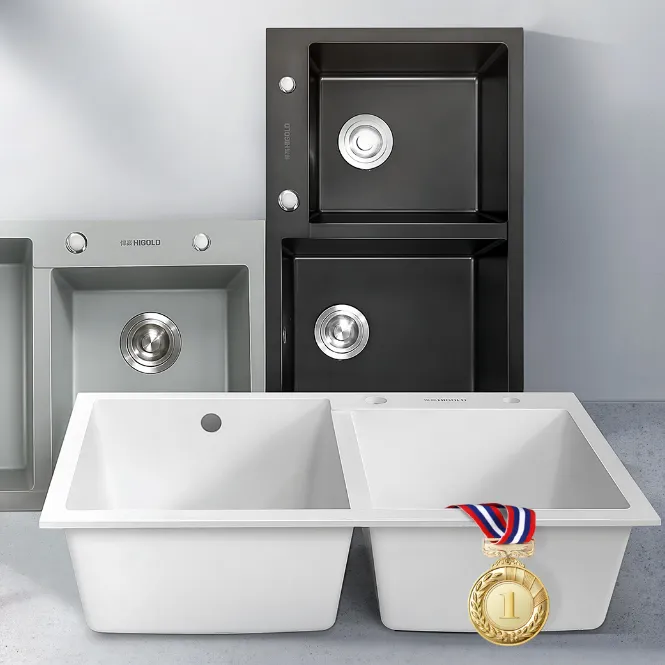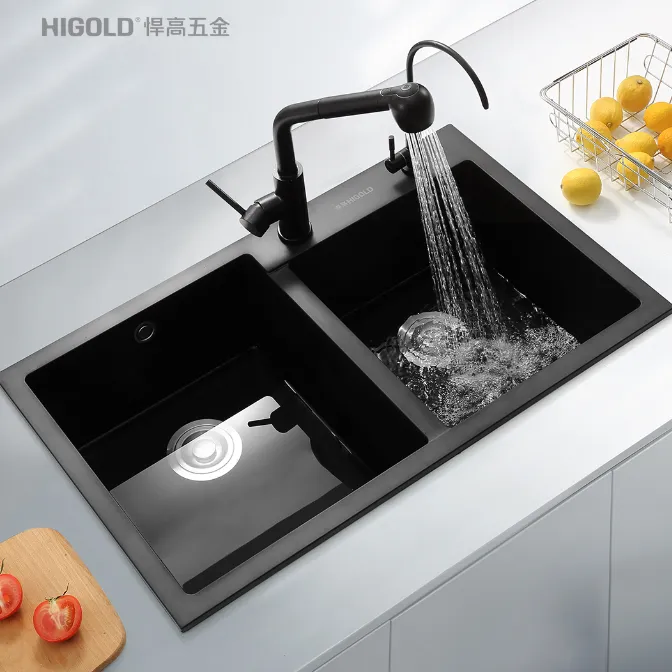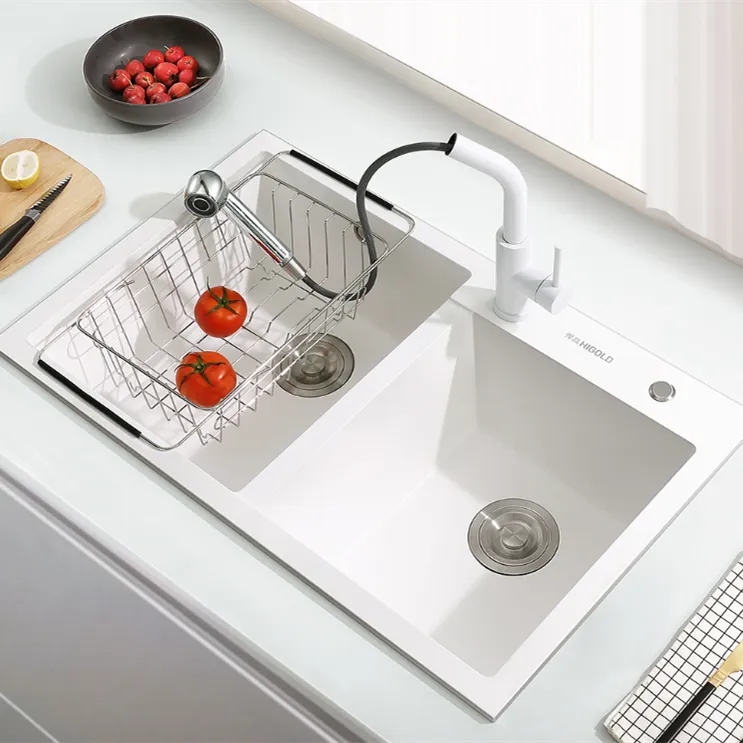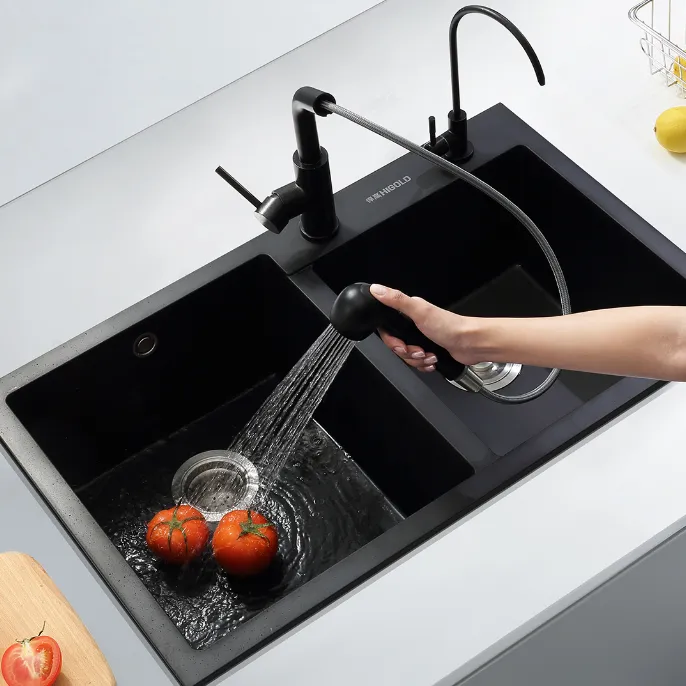As one of the most frequently used appliances in the home, the kitchen sink plays a vital role in the use and cleaning process of the entire kitchen. With the improvement of family living standards, people's choices for kitchen sinks have become more and more diverse, and factors such as functionality, design, material, and installation methods have become important considerations for consumers when choosing. As the use time increases, the aging, wear, or design inadaptability of the kitchen sink often requires the sink to be replaced.
So, which types of kitchen sinks are the simplest and most convenient to replace? This question is undoubtedly the focus of many families, especially considering factors such as installation difficulty, required tools, time cost, and later maintenance. Choosing a suitable sink has become a problem for many consumers.
This article will start from different types of kitchen sinks and analyze the difficulty of replacement. Through a detailed analysis of sink materials, installation methods, maintenance requirements, etc., it helps consumers make more reasonable choices when they encounter situations where they need to replace sinks.

What types of kitchen sinks are there?
Before we delve into the easiest kitchen sinks to replace, we first need to understand several common types of kitchen sinks on the market and their characteristics. There are many types of kitchen sinks, which are mainly classified according to different factors such as installation method, material, shape, etc. Common kitchen sinks mainly include topmount kitchen sink, undermount kitchen sink, flushmount kitchen sink and rimless sink.
1. Topmount kitchen sink
The topmount kitchen sink is the most common type of sink, and its installation method is relatively simple. The edge of the sink is located above the countertop, and the contact between the sink and the countertop is usually fixed by silicone sealant. The installation of the topmount kitchen sink does not require changing the structure of the existing countertop, so it does not require too much construction work. Even if it needs to be replaced, it is relatively easy to disassemble.
Advantages of topmount kitchen sink:
● Simple installation, suitable for most homes and kitchens.
● Relatively simple maintenance, the sink edge is easy to clean.
● Suitable for a variety of countertop materials, including wood, quartz, marble, etc.
Disadvantages of topmount kitchen sink:
● Dirt and scale easily accumulate on the edge.
● Although it is easy to install, the overall appearance is more traditional and may not match the modern kitchen style.

2. Undermount kitchen sink
The design of undermount kitchen sink is relatively simple. The sink is installed under the countertop, the edge of the sink is hidden, and there is no obvious edge above the countertop. Undermount kitchen sink can provide a smoother visual effect and is easier to clean because there is no edge to accumulate dirt.
Advantages of undermount kitchen sink:
● Beautiful, modern, suitable for modern kitchen design.
● Easy to clean, no obvious edges and gaps.
● Reduced accumulation of stains and water stains.
Disadvantages of undermount kitchen sink:
● The installation is more complicated and requires precise cutting of the countertop.
● If it is not installed properly, the seal between the sink and the countertop is prone to problems, resulting in water leakage.
● It is difficult to readjust the cut of the countertop when replacing it.
3. Flushmount kitchen sink
Flushmount kitchen sink is usually embedded in the countertop, and the edge of the sink is flush with the countertop. The difference between it and the topmount kitchen sink is that the bottom of the flushmount kitchen sink is in contact with the countertop, and the countertop needs to be cut during installation, and the sink is fixed to the countertop by clips or sealants.
Advantages of flushmount kitchen sink:
● Compared with the topmount kitchen sink, the appearance is simpler and suitable for modern kitchens.
● It is easier to clean, and there is no obvious protrusion between the edge of the sink and the countertop.
Disadvantages of flushmount kitchen sink:
● The countertop needs to be cut and adjusted during installation.
● Once improper installation or damage to the countertop occurs, it is difficult to replace.
4. Rimless sink
Rimless sink is a relatively new sink design, which is characterized by the edge of the sink being completely flush with the countertop, and it looks like there is no edge of a traditional sink. Rimless sinks are usually made of materials such as stainless steel or quartz, with a simple and stylish design, which can provide a very high-end visual effect.
Advantages of rimless sink:
● Modern appearance, enhances the overall kitchen style.
● Easy to clean, no dirt accumulates on the edge.
● The sink and the countertop are almost seamlessly connected, reducing the accumulation of water stains.
Disadvantages of rimless sinks:
● Complex installation, requiring very precise cutting and docking.
● If it is damaged or needs to be replaced, it is difficult to disassemble and the countertop design needs to be readjusted.

What are the factors that affect the difficulty of replacing a sink?
When replacing a kitchen sink, the difficulty is affected by many factors. Different types of sinks have different installation methods, designs, and materials, so the tools, time, and processes required for replacement will also be different. Here are a few main factors:
1. Installation method
Sinks with different installation methods vary greatly in the difficulty of disassembly. Topmount kitchen sinks are usually easier to install, do not need to change the countertop structure, and are easier to disassemble. Undermount kitchen sinks require precise cutting of the countertop, and must be carefully removed when disassembling, otherwise it is easy to damage the countertop. For flushmount kitchen sinks and rimless sinks, their installation and removal are relatively complex and require professional tools and technical support.
2. Countertop material
The connection method between the kitchen sink and the countertop depends not only on the type of sink, but also on the material of the countertop. Different countertops such as wooden countertops, stone countertops, and quartz countertops require different operation methods when removing the sink. If the countertop material is fragile, you need to be extra careful when removing the sink to avoid irreparable damage to the countertop.
3. Sink material
The material of the sink also affects the difficulty of its removal and replacement. For example, sinks made of natural materials such as granite and quartz need to be removed with special care because these materials may crack due to improper operation. Stainless steel sinks are relatively durable and require fewer tools when removed. In addition, sinks of different materials also have different requirements for the adhesion of sealants, which may affect the removal and replacement of the sink.
4. Sink size and shape
The size and shape of the sink directly determine the difficulty of its replacement. If the size of the sink does not match the size of the countertop, additional cutting or modification of the countertop may be required when removing the old sink and installing the new sink, which increases the workload. For some sinks with special shapes (such as large double-bowl sinks or corner sinks), the difficulty of installation and removal will also be relatively high.
5. Sealing and drainage system
The sealing design between the kitchen sink and the countertop and whether the drainage system of the sink is smooth will also affect the difficulty of replacing the sink. If the sealant of the sink is aged or the drainage system is not smooth, these problems may need to be dealt with additionally during removal. For those sinks with complex drainage systems installed, the disassembly and reinstallation of the pipes must also be considered during removal.

What is the easiest kitchen sink to replace?
According to the above analysis, the easiest type of kitchen sink to replace is usually the topmount kitchen sink. This type of sink is simple to install and does not require large-scale modifications to the countertop. When disassembling, only the screws and sealant that fix the sink need to be removed. Therefore, the replacement process of the topmount kitchen sink is relatively easy and suitable for DIY operations for ordinary families.
● Topmount kitchen sink: Easy to install and easy to disassemble, suitable for most home kitchens, especially for consumers who do not want to change the countertop design.
● Stainless steel material: Stainless steel topmount kitchen sinks are more durable and versatile, and the tools required for disassembly are relatively simple, making replacement easier than stone sinks.
● Simple drainage design: The topmount kitchen sink has a simple drainage system, which can avoid disassembling complex pipes during replacement, reducing time and energy investment.
Why is Higold a Preferred Supplier for Kitchen Sinks Worldwide?
Higold’s reputation as a top manufacturer of kitchen hardware products is built on our commitment to high quality and competitive pricing. We have a dedicated R&D team and state-of-the-art production equipment, ensuring that our products meet international standards. Whether you're looking to buy in bulk or need customized designs, Higold offers the best solutions with low prices and wholesale options.


